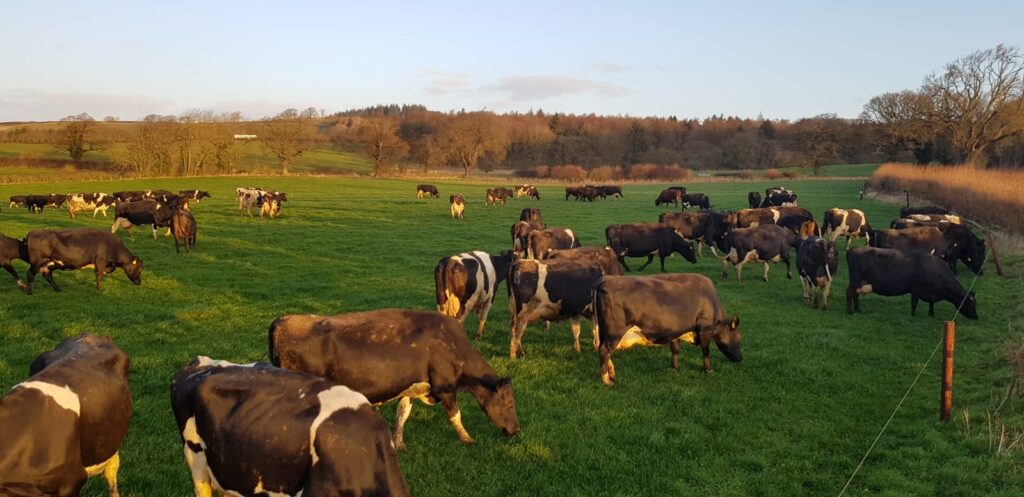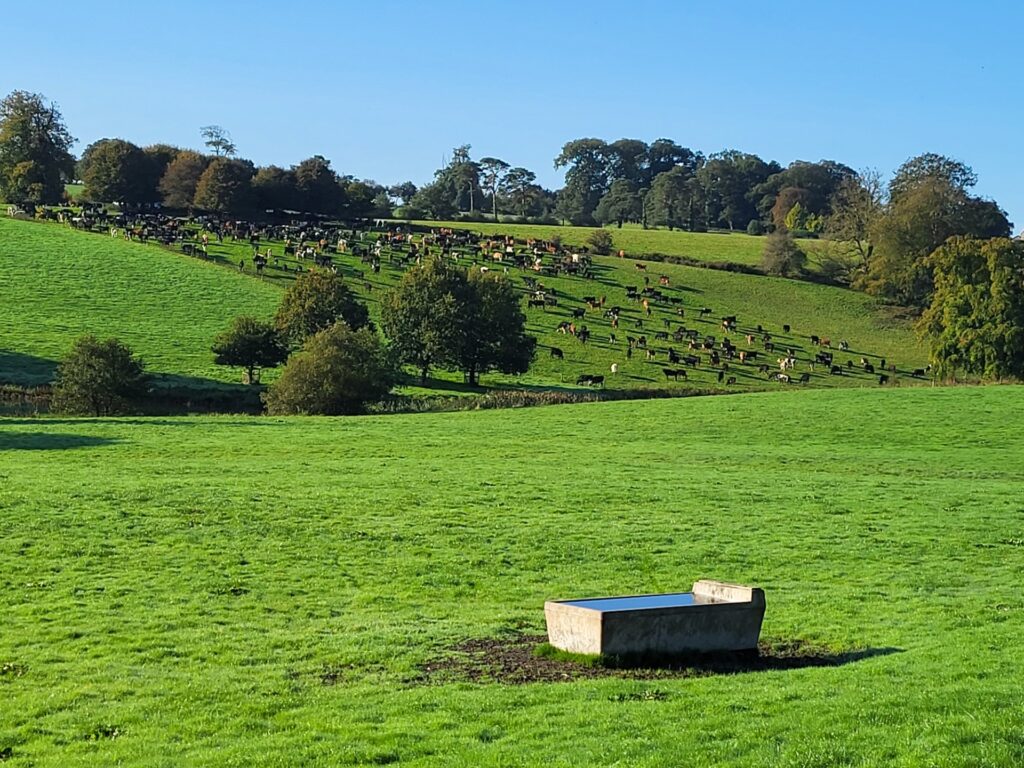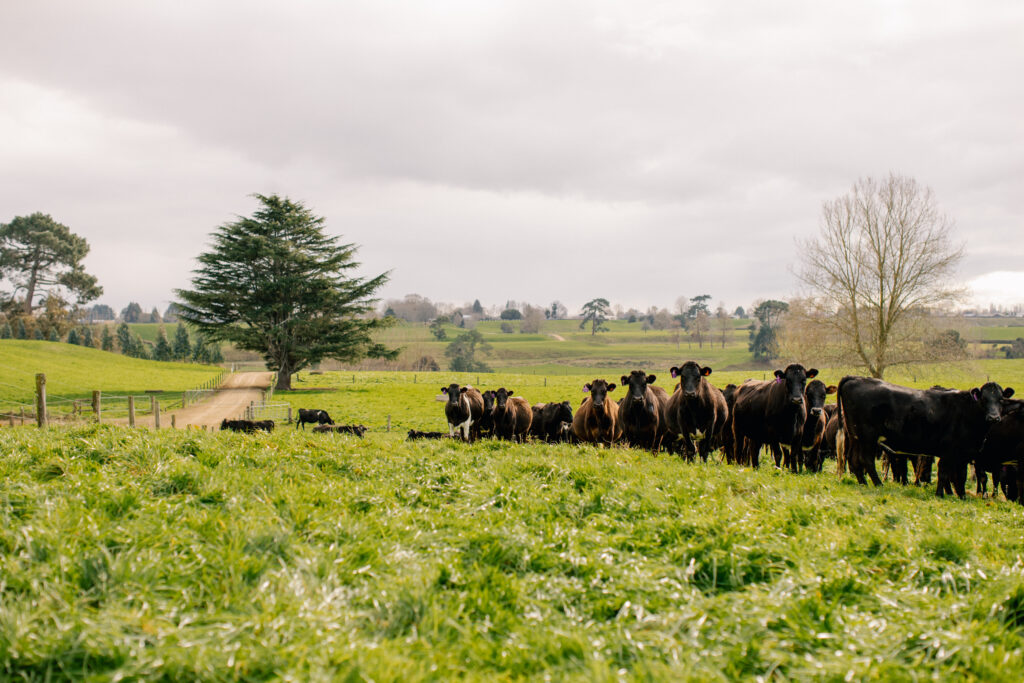The biggest contributors to greenhouse gases from agriculture are nitrous oxide from soils and methane from livestock and manures.
Many UK farmers are looking to reduce herd numbers to achieve emissions goals; without of course, sacrificing milk production and profitability. They’re making progress. In the 2022/23 year, average UK milk yield increased 0.5% to 8133 litres per cow while the national herd size reduced by 10,000 cows (Source: Department for Environment, Food & Rural Affairs: Farm Business Survey 2022/23 – Dairy Production in England).
Artificial breeding with improved genetics is a leading factor in farmers’ achieving this balance. According to a recent AHDB report, the UK leads global sales of sexed semen with 84% of all dairy semen in the 12 months to April 2024 going through additional laboratory processing.
Cogent Breeding Limited sells more than 2.3 million straws each year to farmers across the British Isles, and abroad.
“Genomics offers us a huge opportunity to drive genetic gain on farm and improve the efficiency of our base cows. But to do this we have to ensure only the best are put to sexed dairy, so breeding the best replacements,” says Cogent’s Managing Director Stuart Boothman.
Improving efficiences
It is a trend being seen worldwide. In New Zealand, 82% of the national dairy herd were mated through artificial breeding (AB) in the 2022/23 year (Source: DairyNZ, LIC, New Zealand Dairy Statistics 2022-23).
LIC, a New Zealand farmer-owned co-operative, has pioneered some of the biggest innovations in modern farming including the systematic testing of milk quality, Long Last Liquid (fresh) semen, DNA technology to genomically identify and help select elite sires; and more recently a short gestation bull team bred to deliver offspring up to 10 days early.
Late last year, Cogent Breeding Limited and LIC hosted their first study tour bringing a group of farmers to New Zealand to look at different breeding programs, farming systems and herd management practices and also compare solutions to shared challenges.
As part of the study tour, 14 farmers from the UK visited Rockland Farms in Aria, South Waikato/King Country, to see how Matt and Emma Darke are using genetics to improve efficiencies in their 1300-strong Jersey herd.
Once-a-day milking
The land is what can only be described as ‘not dairy country’. Whereas most dairy farmers in the greater Waikato region enjoy flat, lush plains, Rockland Farms is 500ha of rugged terrain, where cows graze on 45°-sloped hilly pasture. A walk of up to 4.5km between paddocks influenced the couple’s decision to milk once a day rather than the traditional twice-a-day system.
The land is what can only be described as ‘not dairy country’. Whereas most dairy farmers in the greater Waikato region enjoy flat, lush plains, Rockland Farms is 500ha of rugged terrain, where cows graze on 45°-sloped hilly pasture. A walk of up to 4.5km between paddocks influenced the couple’s decision to milk once a day rather than the traditional twice-a-day system.
Emma works alongside LIC to pick nominated straws and sexed semen. “It’s quite hard picking a bull that’s going to work for what I class as a ‘herd sire’ that’s going to have an impact across a wide range of cows,” she says. “You can pick a bull that will have an impact on certain cows, but if I’m wanting one or a group of bulls to do a decent job, the offspring need to be a lot better than their dams. The bull’s got to have high volume, great components and good breeding values on capacity and udder traits, along with protein, fat and the will to milk.”
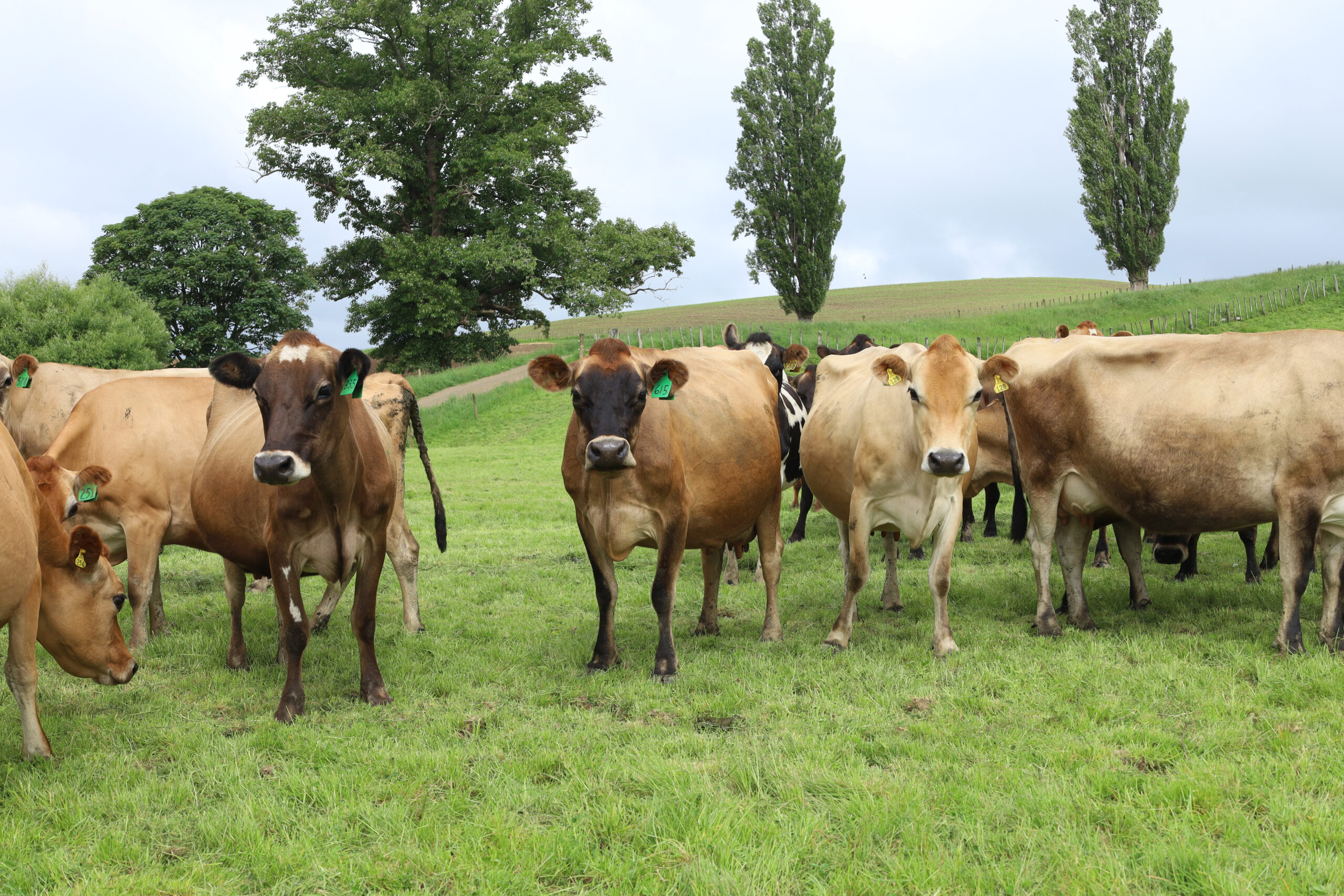
This approach has allowed Rockland Farms to make strategic decisions around culling and to improve efficiency. In recent years the herd’s empty rate has sat at 6-8%. The farm’s cows are also living longer and producing well into their later years. “We cull on production rates, not on age,” says Emma.
Jerseys tend to have the lowest average liveweight across all ages (around 400kg) compared to Holstein Friesians and Holstein Friesian/Jersey crossbreds. But they are very efficient producers, converting around 11t of homegrown feed (and a small amount of additional palm kernel as required) to between 320kg and 420kg of milk solids/cow annually (New Zealand’s milk price is calculated on milk solids not litres).
Refining the process
Over the years, Matt and Emma have refined their artificial insemination processes and now sell semen to breeding companies – they currently have LIC’s number one Jersey sire. DNA parentage testing has further increased the farm’s efficiency, profitability and sustainability. “Every best cow had a heifer,” says Emma.
“There are 2,000 two-litre bottles of milk sitting up there in the paddocks every day and the cows bring them down for us.”
An hour north, BBC Farms in Ōtorohanga showcases how herd genetics can be streamlined to improve breeding worth (BW – the measure of an animal’s ability to breed profitable and efficient replacement heifers), production worth (PW) and a farm’s bottom line. Named for the first initials of its owners, Barbara, Brian, and Craig Mora, BBC Farms milks 1,700 Holstein Friesian and Holstein Friesian cross cows across four farms, covering around 488ha in total. Each farm is run independently using contract milkers. On average, the farms produce around 1,500-2,000kg/ha of milk solids or 480-550kg/cow.
Technology
Having previously worked in the agricultural corporate sector – Craig in banking, and his wife Kylee at LIC – the couple entered farming in 2013, going into partnership with Barbara and Brian on a purchased 380-cow farm.
This added to a (then) 220-cow farm that Brian and Barbara already owned. The family were soon able to expand operations and bought two farms and leased another, one of which they converted to a drystock farm.
Kylee brought her experience in genetics and technology back to the farm. Each cow is fitted with an ear sensor and in 2023 they installed drafting gates in every dairy shed. Craig admits he took a bit of convincing. “We bought ear sensors for mating and got health and nutrition information with it,” he says.
“I suppose in my mind nutrition was for a total mixed ration system in Europe where the cows live in a shed. So I wasn’t really a believer. But it was offered to us and we started using it. Our vet is really keen on it and it’s been able to show some pretty cool stuff around transition diet, rumination, eating minutes and seeing what we can change. Our vet is now able to tell us which cows are likely to be empty based on their dry-off and transition around calving.”
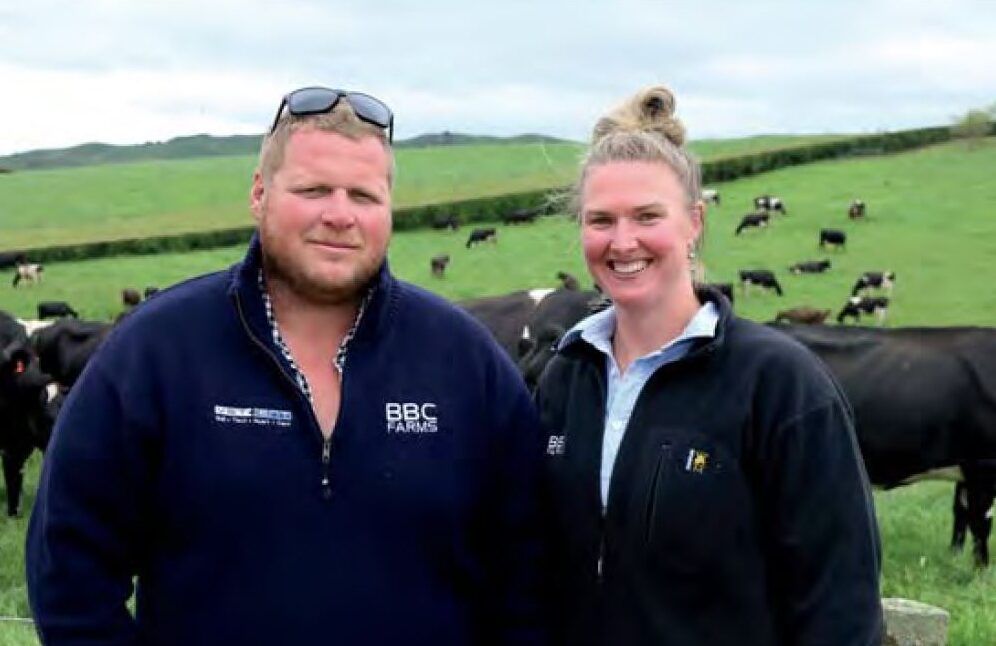
The golden rule
The farm herd tests quarterly, which helps identify low producers among the herd. The family have found that some of their smaller cows are some of their highest producers of milk solids – ultimately from using better genetics.
“Most people in New Zealand are a little bit scared of failing and are quite set in their ways,” says Craig. “But between the four of us including Mum, Dad and Kylee we’re a pretty good team. We’ve all got different aspects to what we bring to the farm. I’m not scared to change stuff.”
The golden rule is that whatever they introduce has to be replicable across all the farms by all staff.
This also applies to breeding decisions, which have to be easy so that staff are able to do them day-to-day, says Kylee.
This has included genomic testing, which the farm has been able to trial thanks in part to funding from a Fonterra-Nestlé partnership designed to help New Zealand farmers reduce emissions.
During the farmers’ visit, Kylee was able to whip out her smart phone and provide the genomic testing details of tagged heifers and cows in the nearby paddock. “There are years of breeding going into these things,” notes Craig.
“I couldn’t tell you about the fundamental differences between the cows by looking at them; but Kylee’s got the information at her fingertips – DNA, milk production, BW and PW.
“We haven’t always had this luxury. Going from milking 220 cows 12 years ago to milking 1,700 cows now, we’ve needed every cow we could get. That hasn’t always led to us having a lot of choice, to be fair. We’ve tended to make a decision for mating based on paper – herd test data, BW and PW,” he adds.
“DNA parentage testing is the biggest thing we should be talking about as farmers if we want to cut emissions and have an efficient farm – looking at genetically superior cows.”

